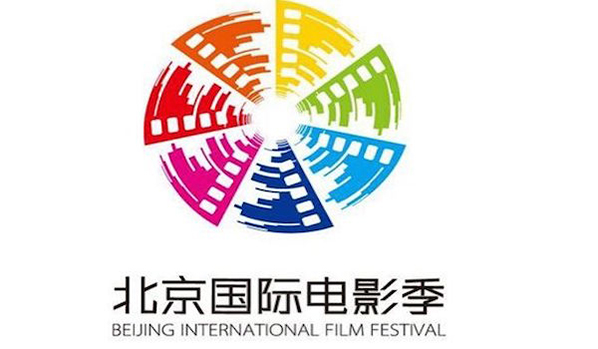A focus on crowd-pleasers stifled innovation at the capital’s premier cinematic celebration.

The Beijing International Film Festival (BJIFF) came to a close on April 23 after the usual scramble for tickets, a week’s worth of film previews and social mixers, and screenings thronging with movie buffs.
The palpable excitement at BJIFF gave the occasion a carnival-like atmosphere. Multiple screenings of films by renowned directors Hirokazu Koreeda, Michelangelo Antonioni, and Jacques Tati sold stacks of tickets, so the festival committee scheduled a number of extra screenings to fulfill fan requests. Home to a large and vibrant artistic community, Beijing showed that film festivals still have a space to grow and thrive, despite the revenue problems plaguing art cinema.
Year after year, the festival spotlights a few select directors, screens recently restored classics, and exhibits the best pictures from the previous year’s European Film Awards or the Oscars. In recent years, though, BJIFF has shown few substantial innovations. Instead, organizers have continued to go through the motions, screening a few classics here and there. Innovation is the most important facet of film festivals: A meaningfully curated lineup, an emphasis on new films, and a commitment to broadening the festival’s global impact are essential to the appeal of the event.
What would a more meaningfully curated lineup entail? Every year, BJIFF features works from prominent directors like Antonioni and Tarkovsky, or they show restored movies like The Godfather trilogy or Lawrence of Arabia. If ticket sales are any indication, fans respond favorably to these films, of course, but as a professional cinematic event, BJIFF should do more. They should also feature new talent, introducing the audience to equally outstanding works that may not be as well-known. Moreover, BJIFF should showcase ambitious films that require a bit more context to fully grasp, but which ultimately help the audience gain a deeper appreciation for the medium.
BJIFF’s finest hour was arguably 2016’s retrospective of the works of the late, great Japanese director Yoshimitsu Morita. Compared to his contemporaries, Morita still remains largely unknown in China. Though he directed a few popular films, including 1997’s A Lost Paradise, his popularity as a director is not indicative of the overall quality of his works. The curators ventured as far as the Russian embassy in Japan to obtain copies of his movies, then translated the subtitles line by line. Ultimately, they were able to screen eight of Morita’s most representative films. It was one of BJIFF’s most fascinating screenings, and also did rather well at the box office.
But such grandiose efforts remain few and far between. Usually, BJIFF channels most of its energy into film screenings, which bizarrely sometimes results in showings of Hollywood blockbusters devoid of any technical content, like the Fast and the Furious and Pirates of the Caribbean franchises. That sort of effort would have been better spent on introducing and propagating new works to a wider audience.
BJIFF also urgently needs to prioritize new film premieres. This year, the festival won the rights to the global premiere of the sequel to Yoji Yamada’s acclaimed 2016 comedy, What a Wonderful Family! While this is undeniably a step in the right direction, premieres for new films of this caliber remain far too infrequent.
Film festivals should include new movies because they add value. The actors, directors, and producers in attendance help publicize new films on a grand scale, and the press eagerly descends on each event. The resulting hype creates an environment that’s ripe for striking deals. To both the media and the audience, the chance to see the latest and most influential films is thrilling enough — and the awards handed out by the judges’ panel at the show’s finale only add to the fervor.
This is why the main film festivals in Europe and North America — Berlin, Cannes, Venice, Toronto, and Sundance in Park City, Utah — all focus on releases of new films that will reach global, or at least continental, audiences. In doing so, some festivals, particularly Toronto, have become important indicators of Oscars frontrunners.
Less influential festivals tend to focus on more niche audiences, but they still spotlight new films. This is certainly the case with international film festivals in Tokyo, Hong Kong, and Busan, South Korea. Naturally, the quality might be inconsistent, but the core of the events remains firmly on the future of film, instead of being overly nostalgic for the past.
How film festivals select, plan, and organize their content reflects the unique voice of the whole event. They act as guides for the media and for audiences by carefully selecting the best pictures of the year, while filmmakers themselves use festivals to generate publicity and sell movie rights.
As a result, festivals across the world have become more and more individualized. For example, the Sundance Film Festival and the International Film Festival Rotterdam in the Netherlands both emphasize independent films. Berlin favors movies with a political slant. Venice tends toward artistic and experimental films. This kind of specialization contributes to their uniqueness and authority, and each uses new films as a means to give their individual voice more weight.
BJIFF, meanwhile, seems more focused on the box office and attendance. But by prioritizing figures over features, it sells short its potential global impact and media attention.
The traditional strongholds of cinema — France, Italy, Germany, and the United States — remain the driving forces behind major film festivals like Cannes, Venice, Berlin, and Sundance. Tokyo, Busan, and Hong Kong have risen as the most important film festivals in East Asia because their host cities currently represent the gold standard for moviemaking in the region.
As a pageant of China’s most important cinematic work, BJIFF must strive for greater innovation while helping domestic films gain traction in the wider world. But if its goals extend no further than screening surefire crowd-pleasers from the past, then they will continue to find a limited audience. Such a strategy will do nothing to assuage the primary concerns of Chinese cinephiles today: burnishing the credentials of domestic film culture and introducing the world to China’s best movies.
— This article originally appeared on Sixth Tone.





